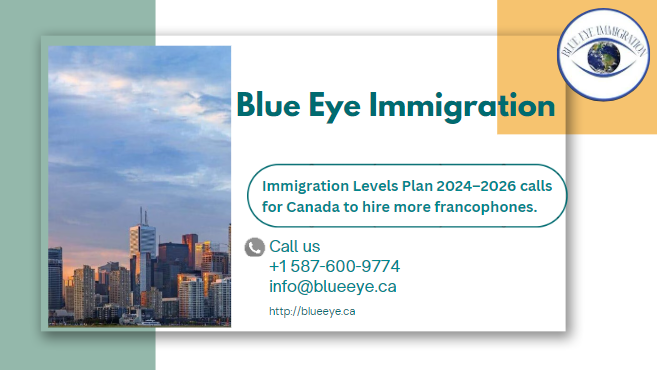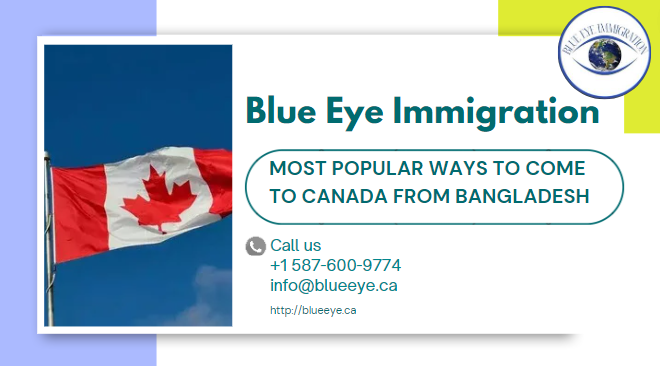Immigration, Refugees and Citizenship Canada (IRCC) hopes to accept 31,500 French-speaking permanent residents (PRs) in 2025 and 36,000 immigrants in the same category in 2026, as per the country’s most recent Immigration Levels Plan 2024–2026.
The Immigration Levels Plan, which is released annually by Canada’s immigration department, serves as a guidance for how many new permanent residents will be allowed entry into the nation during the following three years.
Note: PR objectives are broken down by Canada’s three general immigration classes (economic, family, and refugee/humanitarian) in the Immigration Levels Plan.
Notably, the plan for this year predicts that Canada will stabilize the number of new PRs in 2025 and 2026, maintaining the 500,000 new PR objective for overall admissions in both years.
A closer examination of the data shows that, contrary to expectations that Canada’s overall admissions target will stabilize, admissions to one immigration category are predicted to increase for the next two years, as stated in this year’s plan.
For which immigrant category, admissions objectives are expected to increase in 2025 and 2026?
According to the IRCC, there will be a 4,500 increase in admissions in 2026 compared to the objective in 2025 for “overall French-speaking Permanent Resident Admissions outside Quebec*.”
*The distinction about admissions outside of Quebec is significant because it reaffirms that Quebec has immigration laws, regulations, and programs that are unique from those of the rest of Canada.
This is noteworthy since, in the last two years of the Immigration Levels Plan, it is the only admissions category where the stated objective increases. Meanwhile, all but one of the other mentioned objectives are presently likely to be consistent throughout those years, given that the aggregate admissions target (500,000) does not change between 2025 and 2026.
The “Economic Pilots” category, which encompasses the following three immigration streams, is the only admissions category whose goal admissions is anticipated to drop between 2025 and 2026:
- Pilot for Agri-Food
- Northern and Rural Immigration Pilot
- Project on Economic Mobility Pathways
It is anticipated that the admissions goal for this category would drop from 14,750 in 2025 to 13,750 in 2026.
Why would IRCC want to increase the number of admissions of French-speaking permanent residents outside of Quebec?
An Immigration System for Canada’s Future, a recent strategic paper from Canada, provides some justification for the higher admissions objective for all French-speaking PRs.
After months of consultation with numerous stakeholders, the Canadian government and IRCC produced this report that includes conclusions and an action plan connected to a new strategy for Canada’s immigration system. The IRCC has described its objective to increase “the vitality of Francophone minority communities,” including those outside of Quebec, in the latest report.
This portion of the IRCC’s action plan, according to the organization, is meant to promote the department’s goal of “developing a comprehensive and coordinated growth plan” for immigration in this nation, which includes “[supporting] communities through actions such as this.” According to IRCC, their emphasis on expanding immigration for French-speaking people is a component of their investigation into “opportunities to enhance regional immigration [and] supporting welcoming communities across Canada.”
The IRCC has specifically stated that they would carry out the following tasks to achieve this objective:
- To “work toward restoring and increasing [the] demographic weight” of Francophone minority groups across Canada, create a new Francophone Immigration Policy.
- “Increase selection and promotion efforts” for PRs who speak French
- Encourage “French-speaking immigrant settlement and integration in Francophone minority communities”
- Establish “ambitious yet attainable targets to continuously increase [Francophone PR admissions].”
Together, these factors explain Canada’s objective of bolstering and expanding immigration of French speakers throughout the nation, which accounts for the anticipated rise in the admissions target for this group of new PRs.
The significant progress made by IRCC in promoting Francophone immigration throughout Canada
During National Francophone Immigration Week in November of this year, Immigration Minister Marc Miller reiterated the importance of Francophone immigration to Canada. Miller included the following in his statement: “We can emphasize the significance of Francophone immigration to Canada during National Francophone Immigration Week. Now is the perfect opportunity to thank French-speaking immigrants for their outstanding contribution to Canada’s rich cultural, demographic, and economic diversity.
Canada also unveiled its Action Plan for Official Languages 2023–2028 in April of this year, which outlined the means by which the immigration department is securing funds to facilitate the expansion of official languages in this nation.
$18.5 million will be used “to promote and build recruitment support [for Francophone immigration] both in Canada and abroad, including in Africa, Europe, the Middle East, and the Americas,” according to the IRCC, as part of this strategy. Furthermore, according to the IRCC, $50 million “will go to further consolidating the Francophone integration pathway, [including] improving the reception capacity of Francophone minority communities and [making] settlement and integration easier for newcomers to Canada.”
The goal of these upcoming projects is to complement ongoing efforts to boost immigration for Francophones throughout Canada, including the way Francophone immigrants gain from the Express Entry application management system in the context of both regular Express Entry draws and the IRCC’s recently introduced category-based selection system.
More: Get to know Express Entry in more detail
In particular, candidates for Express Entry who speak French well can gain more Comprehensive Ranking System (CRS) points. This will increase their chances of being selected for an Invitation to Apply (ITA) for permanent residence in Canada during a regular lottery.
Additionally, one of the six categories in the IRCC’s new category-based draw method is reserved especially for immigration candidates who speak French fluently. This implies that in addition to regular Express Entry drawings that give priority to a candidate’s CRS score, qualified immigration applicants who speak French may also be eligible for an Express Entry ITA in a different kind of draw.
Important: To find out more about Express Entry drawings based on categories, see this link.
Canada’s immigration agency has been successful in increasing immigration to Francophone minority areas outside of Quebec thanks to measures like the ones mentioned above. This entails bringing in more than 16,300 new immigrants to these localities in order to meet their declared goal of 4.4% of French-speaking immigrants outside of Quebec by the year 2022.

